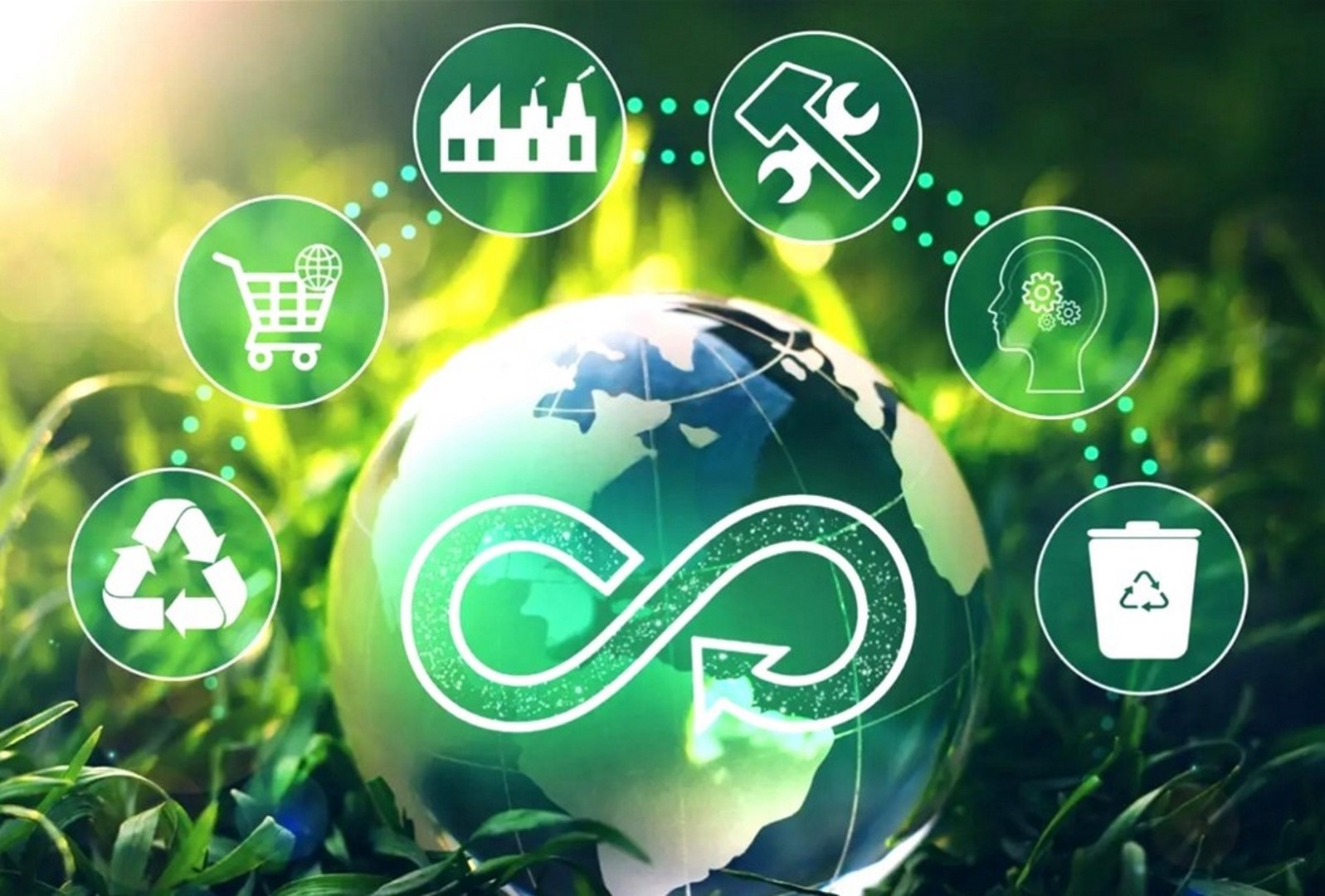The Circular Economy in Vietnam: Trends and Investment Opportunities
Vietnam is embracing a new economic model—the circular economy (CE)—to create sustainable growth, reduce environmental impact, and drive long-term economic resilience. As Vietnam modernizes its industrial base and aligns with global sustainability goals, the move from a “take-make-dispose” linear system to a circular, regenerative model is unlocking new opportunities for investors, startups, and multinational corporations.
In this blog, we’ll explore what the circular economy looks like in Vietnam today, the key trends shaping its development, and the sectors where investors can find high-potential opportunities.
♻️ What Is a Circular Economy?
A circular economy is an economic system that focuses on eliminating waste, reusing resources, and regenerating natural systems. It encourages designing out waste and pollution, keeping products and materials in use, and restoring ecosystems.
For Vietnam, a country facing environmental degradation, plastic pollution, and high carbon emissions, adopting a CE model is essential for sustainable growth—especially as it aims to become a high-income economy by 2045.
🏛️ Government Action: National Strategy and Circular Economy Roadmap
Vietnam formalized its commitment to the circular economy with the Environmental Protection Law 2020 and later reinforced it with the National Action Plan for Circular Economy (NAPCE) in 2022. The NAPCE aims to:
-
Reduce industrial and domestic waste
-
Encourage recycling and reuse
-
Promote resource efficiency across sectors
-
Build regulatory frameworks to support CE innovation
Vietnam is also integrating CE goals into national planning through the National Green Growth Strategy and Power Development Plan VIII, which include climate action and renewable energy targets.
🔗 Learn more: Vietnam’s Green Growth Strategy 2021–2030
📈 Key Trends Driving Vietnam’s Circular Economy
1. Plastic Waste Management and Recycling Boom
Vietnam produces approximately 3.9 million tons of plastic waste annually, much of which ends up in landfills or waterways. The government has committed to reducing single-use plastics and increasing recycling rates, creating investment opportunities in:
-
Waste collection infrastructure
-
Plastic sorting and recycling facilities
-
Upcycling technologies
-
Circular packaging solutions
Global brands like Unilever and Coca-Cola are already piloting zero-waste models and reverse logistics systems in Vietnam.
🔗 Related: Circular Plastic Economy in Vietnam
2. Green Manufacturing and Industrial Symbiosis
Industrial parks are adopting circular economy principles through industrial symbiosis, where one company’s waste becomes another’s input. The Eco-Industrial Park Initiative in Vietnam, supported by UNIDO, is fostering green innovation in zones like:
-
Tra Noc (Can Tho)
-
Hoa Khanh (Da Nang)
-
Amata (Dong Nai)
Investors can explore sectors such as:
-
Renewable energy for industrial zones
-
Closed-loop water and energy systems
-
Green building materials
3. Agri-Waste to Bioenergy and Organic Farming
Vietnam’s agriculture sector generates substantial organic waste, which is now being viewed as a valuable resource. There are growing opportunities in:
-
Biogas and biomass power projects using rice husk, coffee pulp, or animal waste
-
Composting businesses and organic fertilizers
-
Regenerative agriculture techniques that rebuild soil and reduce synthetic inputs
This aligns with the government’s efforts to promote sustainable farming and reduce reliance on imported fertilizers.
4. Renewable Energy and Energy Circularity
Vietnam is one of Asia’s most active renewable energy markets, particularly in solar and wind power. In the CE context, there’s growing interest in:
-
Waste-to-energy (WTE) plants
-
Energy-efficient production systems
-
Energy-as-a-service models for industrial clients
With the introduction of Power Development Plan VIII (PDP8), Vietnam is targeting a cleaner, decentralized, and circular energy future.
🔗 Learn more: Green Investment in Vietnam: Solar and Wind Energy
5. Construction and Demolition Waste Management
Vietnam’s urbanization boom has led to rising construction waste, creating room for innovation in:
-
Recycled aggregates and building materials
-
Modular construction with reusable components
-
Zero-waste design strategies for buildings and cities
Developers are encouraged to adopt LEED or EDGE certifications, which align with CE principles.
💼 Investment Opportunities in Vietnam’s Circular Economy
Foreign and domestic investors can explore CE-aligned ventures in:
| Sector | Opportunities |
|---|---|
| Waste Management | Sorting, recycling, upcycling technologies |
| Renewable Energy | WTE, biomass, off-grid solar |
| Green Manufacturing | Circular industrial zones, energy efficiency tech |
| Agri-tech | Biogas, compost, precision farming |
| Circular Fashion | Sustainable textiles, reverse logistics |
| Digital Tools | CE analytics, material traceability, blockchain for recycling |
🔗 Partner with Vietnam-Agent.com to identify CE-compliant suppliers and partners.
🚀 Government Incentives for CE Projects
Vietnam’s government actively supports circular economy initiatives through:
-
Tax incentives for green businesses
-
Preferential loans from development banks (e.g., ADB, World Bank)
-
Land lease discounts in eco-industrial parks
-
Fast-track approvals for renewable energy and recycling projects
Additionally, CE projects may benefit from public-private partnerships (PPPs) and collaboration with NGOs for community-level impact.
🧭 Challenges to Overcome
While momentum is strong, challenges remain:
-
Lack of standardized definitions and measurement for CE practices
-
Limited public awareness and behavioral change
-
Inconsistent waste collection in rural areas
-
Financing gaps for small CE-focused startups
However, Vietnam is working to address these through updated Environmental Protection Laws, CE education campaigns, and international collaboration.
✅ Conclusion: Vietnam’s Circular Future
Vietnam is at a turning point. With robust policy support, international cooperation, and rising consumer awareness, the country is laying the groundwork for a full-fledged circular economy. For forward-thinking investors and businesses, this shift offers a wealth of opportunities in sectors ranging from waste management to green manufacturing and clean energy.
If you’re looking to enter Vietnam’s growing sustainable economy, Vietnam-Agent.com can connect you with reliable partners, sustainable suppliers, and government-backed CE initiatives to ensure your investments align with Vietnam’s green vision.
📌 Suggested Reading:
